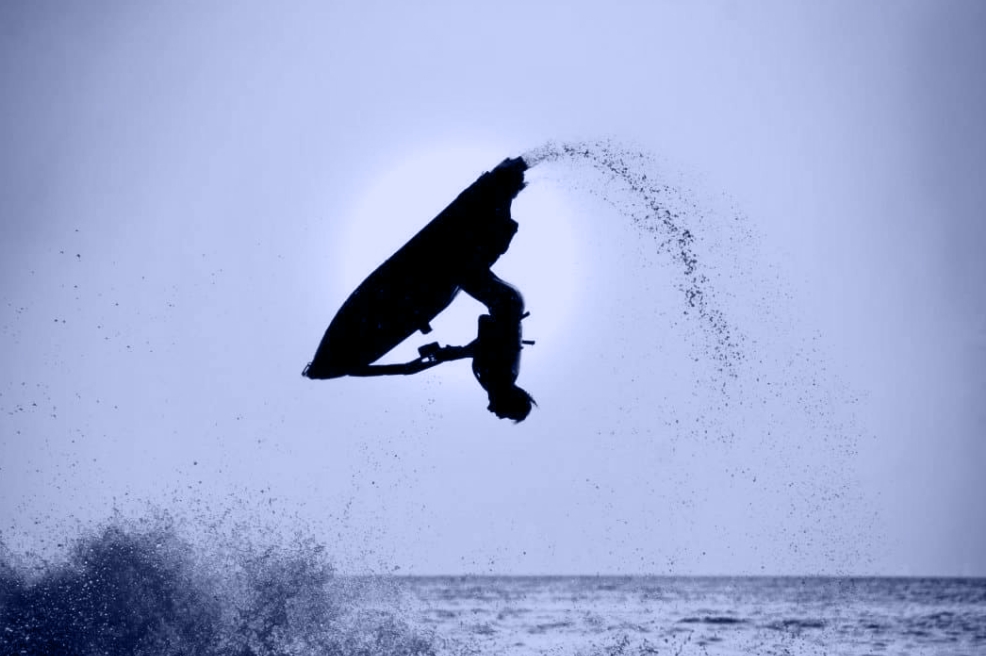Yes, jet skiing has potential risks and injuries, similar to any water sport or recreational activity involving speed and watercraft.
Some common ways people can get hurt while jet skiing include…
- Collision with Objects – Jet skis can collide with other watercraft, stationary objects like buoys or docks, or even natural obstacles in the water, leading to injuries.
- Falls – Riders can fall off their jet skis, especially when maneuvering at high speeds or attempting tricks like jumping waves. Falls can result in injuries ranging from bruises and scrapes to more serious injuries like fractures or head trauma.
- Capsizing – Losing control of the jet ski in rough waters or during sudden maneuvers can cause the craft to capsize, potentially injuring the rider.
- Mechanical Failures – Malfunctions or failures of the jet ski’s mechanical components, such as the throttle or steering, can lead to accidents and injuries.
- Reckless Behavior – Engaging in risky behaviors such as excessive speed, sharp turns, or jumps without proper skill and control increases the likelihood of accidents and injuries.
- Water Conditions – Unpredictable water conditions, such as strong currents, waves, or hidden underwater hazards, can contribute to accidents.
To minimize the risks of getting hurt while jet skiing…
- Wear appropriate safety gear, including a properly fitting life jacket or personal flotation device (PFD).
- Follow all boating and water safety regulations.
- Take a boating safety course and familiarize yourself with the jet ski operation.
- Avoid alcohol and drugs, as they impair judgment and coordination.
- Be aware of your surroundings and other watercraft.
By taking these precautions and respecting your jet ski’s capabilities and the environment you’re riding in, you can enjoy jet skiing safely and reduce the likelihood of injuries.




